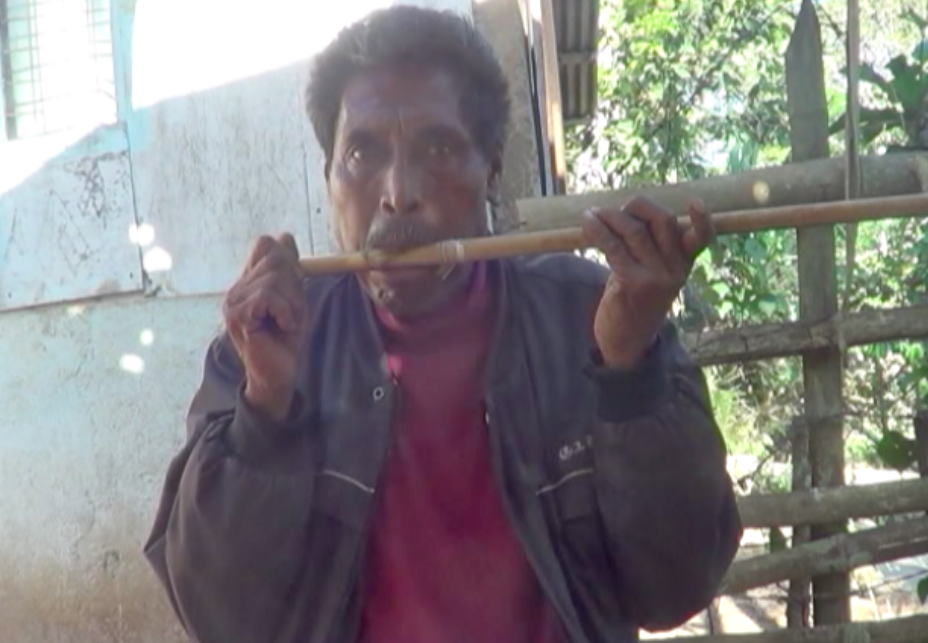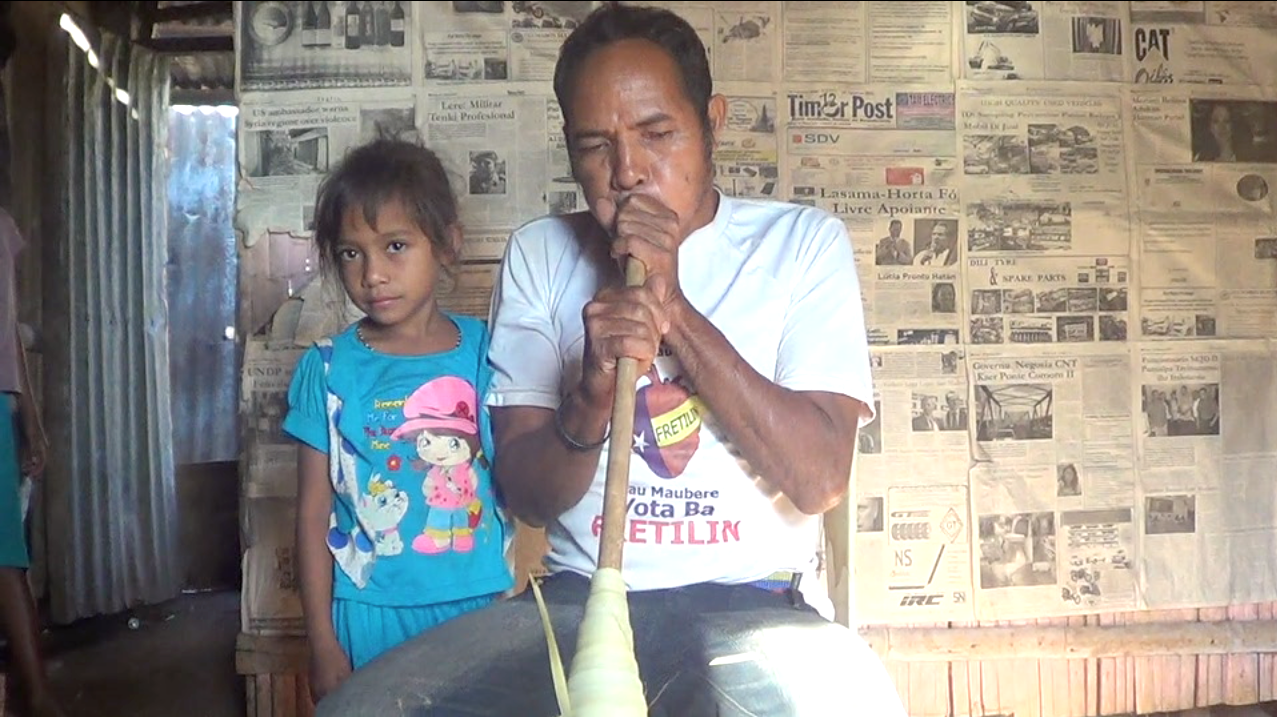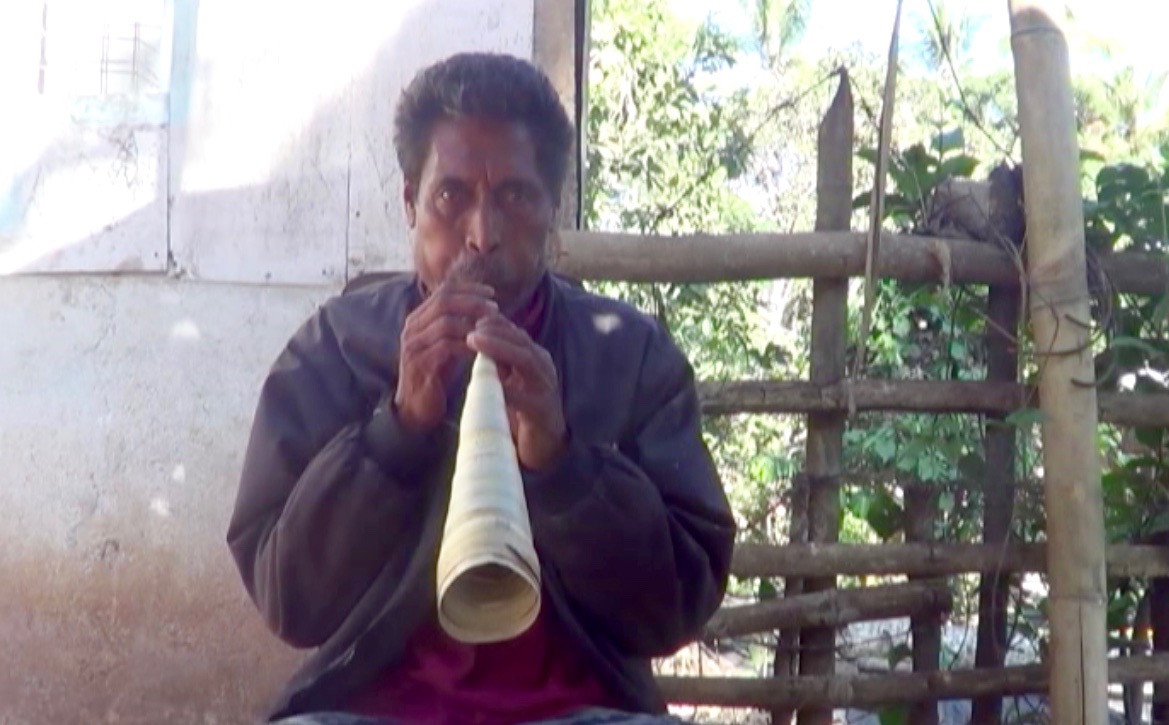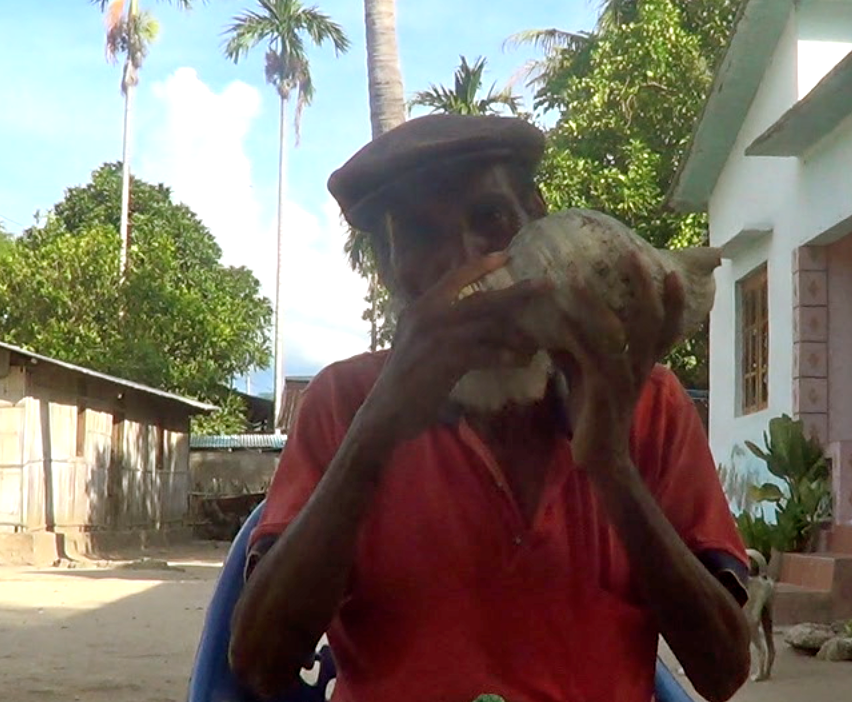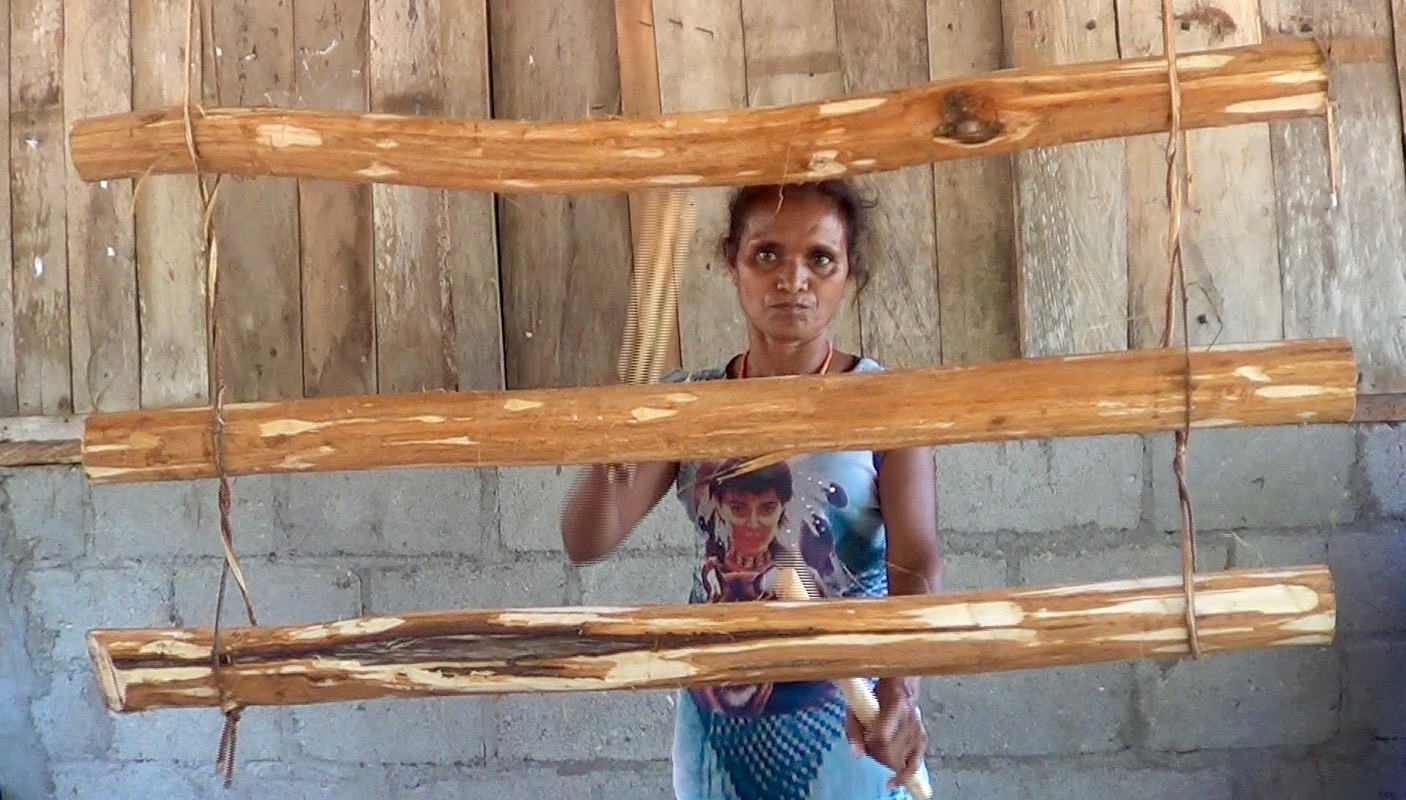Elements of cultural expression: music
The Fataluku people have a fascinating tradition of music and dance. A number of different types of musical instruments used in the Lautem district of Timor-Leste were identified in this research project. To learn more about each element, selecting an element photo will take you to its individual page, where you will find photographs and videos describing how it is made and played.
Musical instruments used by the Fataluku people include oi-oil, keko, fara-fara, moto me'n-me'n, pepur, kakal, and puhu-puhu. Music played by Fataluku performers is composed around the Fataluku language. It often has an irregular rhythm, which often follows the inflections of vaihoho singing, rather than adhering to a specific time signature. There seems to be no moderation for how an instrument is to be played – tuning differs significantly between different players. All instruments were found to be tuned near to an E-flat, perhaps matching the regular vocal range for Fataluku singing.
Most instruments have a primary function of frightening away animals and birds from eating crops, but are also played for entertainment for the performer alone or for use at ceremonial occasions such as weddings, or to communicate across distances. Knowledge of the music and how to make and play these instruments is largely endangered given the small number of people who can still make and play them.
Oi-oil, a bamboo flute, comes in two forms. A short instrument has four finger holes and is played double, (i.e. with two instruments at once) while a longer instrument is played singly, held vertically and blown across the mouthpiece.
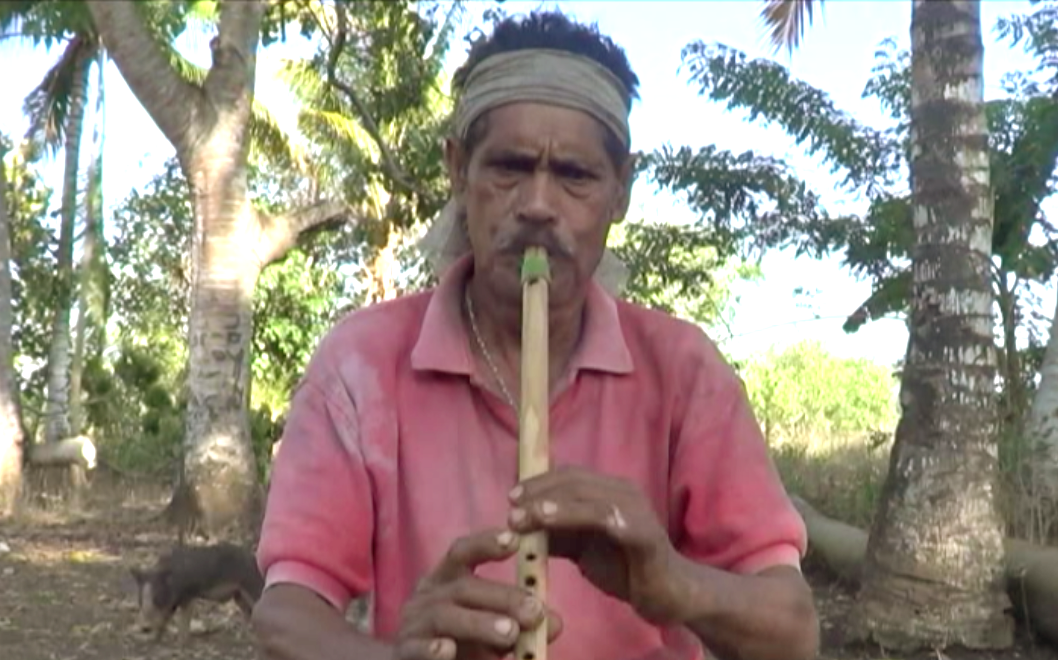
Keko, a bamboo trumpet, has a cone made of akadiru (sugar palm) leaf. The instrument is held horizontally, and is played using inhale and exhale to reach different notes.
Fara-fara is built similarly to the keko, but has a different mouth-piece and reed. The mouth-piece has a small dried palm leaf reed, held in place in a slit made in the top of the bamboo tube. Fara-fara is played by holding the instrument vertically and blowing one extended breath.
Moto me’n-me’n is most similar to an oboe, distinguished by a thin bamboo whistle which is fitted inside a longer, wider length of bamboo. Moto me’n-me’n had the widest range of notes of all instruments found.
Pepur, a jaw harp, is made out of thinly cut bamboo. It is held against the performer's mouth and blown using the mouth as a resonator, while the other hand pulls at a piece of string to create a note.
Puhu-puhu, a conch-shell trumpet, is played by blowing into a hole at the pointed end of the shell, with the shell held horizontally. Puhu-puhu is played to call people to gather, and is used by sailors to call the wind into their sails to aid their travels.
Kakal, a wooden xylophone was the only percussion instrument documented. The kakal consists of three horizontally suspended pieces of pokura wood, with the lowest pitch on the top and the highest on the bottom.
Musik yang dimainkan oleh pemain Fataluku tersusun di sekitar bahasa Fataluku. Musik ini seringkali memiliki ritme tidak beraturan yang sering kali mengikuti nada suara nyanyian vaihoho, alih-alih berpegang pada tanda waktu tertentu. Sepertinya tidak ada moderasi mengenai bagaimana alat musih dimaikan – tala memiliki perbedaan signifikan di antara para pemain yang berbeda. Semua instrument disetel mendekati nada E-flat, kemungkinan untuk mencocokan dengan rentang vokal nyanyian Fataluku.
Kebanyakan instrument memiliki fungsi utama untuk menakut-nakuti binatang dan burung agar tidak memakan tanaman pangan, tetapi juga digunakan sebagai fungsi hiburan bagi diri sendiri, atau juga digunakan untuk acara-acara seremonial seperti pernikahan, serta sebagai alat komunikasi lintas jarak. Pengetahuan tentang musik, cara membuat, dan memainkan instrument-instrumen ini terancam punah mengingat hanya segelintir masyarakat yang masih bisa membuat dan memainkannya.
Can't find what you're looking for? Try viewing the site map.
